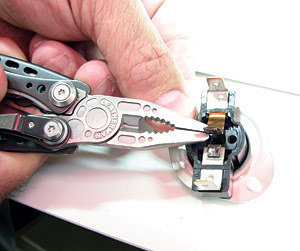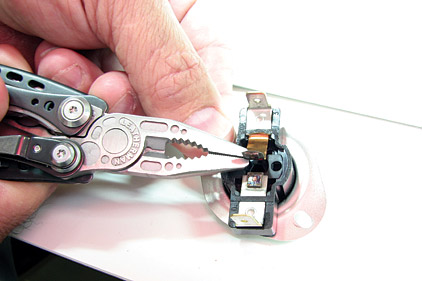 “The outages were caused by the high demand — nearly triple the usual load — placed on [electric] heaters in the cold temperatures,” said Jeff Rogers, a spokesman for Gulf Power Co. The sudden load losses caused voltages to shoot up above the legal limits at points-of-use in zones that remained on-line. This overvoltage caused damage to electrical equipment of all types, including HVAC equipment, circuit boards, relays, reversing valves, as well as posing a fire risk for the end users. A noticeable increase in the number of reported incidents (including fires) in the last few years is the result of the combination of the increasing number of heat pumps installed during the past decade (which must necessarily use supplemental electric heat in temperatures below 20˚F), and the recent record cold weather temperatures that dipped below 20˚.
“The outages were caused by the high demand — nearly triple the usual load — placed on [electric] heaters in the cold temperatures,” said Jeff Rogers, a spokesman for Gulf Power Co. The sudden load losses caused voltages to shoot up above the legal limits at points-of-use in zones that remained on-line. This overvoltage caused damage to electrical equipment of all types, including HVAC equipment, circuit boards, relays, reversing valves, as well as posing a fire risk for the end users. A noticeable increase in the number of reported incidents (including fires) in the last few years is the result of the combination of the increasing number of heat pumps installed during the past decade (which must necessarily use supplemental electric heat in temperatures below 20˚F), and the recent record cold weather temperatures that dipped below 20˚.Some electric heaters used in air conditioning units and heat pumps were protected from overheating by safety fuse links which disconnected the heaters when overvoltage was present. In some cases, overvoltage was not recognized as the cause of the blown fuse links. The heaters were then mistakenly blamed for the no-heat complaints instead of overvoltage. As a result, the electric heaters were then replaced with heaters having only automatic reset temperature limits to control overheating, which do not contain safety fuse links.
Automatic reset temperature limits, commonly used in electric heaters, do not provide fail-safe overheating protection and should not be used alone to prevent overheating. These limits can cycle on and off excessively (or short cycle) when overheating occurs (due to overvoltage, low airflow, or fan failure). After operating in this abnormal condition, in time, the limit’s contacts can fail in the closed position with the contacts welded together, thus preventing disconnection of the heater. Out-of-control overheating and potential melt-down can result. During the equipment’s service life, this condition can go unnoticed by the end user, and may take weeks, months, or years (without any warning) for fire or other catastrophic damage to occur.
Some of the heaters that were used as replacements incorporate fuse links in addition to automatic reset temperature limits. However, these particular fuse links do not provide fail-safe overheating protection either, as stated in the following “Important Notice” disclaimer published by the manufacturer of both devices (fuse links and automatic reset temperature limits): “If failure of the control to operate could result in personal injury or property damage, the user should incorporate supplemental system control features to achieve the desired level of reliability and safety.”
Thermal fuse links are available that do not require supplemental control features and inherently pro-
vide fail-safe overheating protection. Other methods of supplemental system control, such as positive lock-out control circuits with manual reset features, can provide fail-safe overheating protection but are more expensive and thus are seldom used.
Fred Kobie, president of Kobie Kooling, Fort Myers, Fla., said, “I certainly agree that the fail rate over the past 18 months was blamed on the product instead of the condition. I also agree that without overheating protection a contractor is literally playing a life and death game. The fire danger and potential life loss is never worth the risk and with a system in place to prevent the risk, seems like a no-brainer.”
“Using load-carrying automatic reset thermostats as high limit safety devices without reliable backup protection is equivalent to installing potential hidden ticking time bombs,” said Gene Kisner, retired HVAC contactor and controls consultant, Fairmont, W.Va. “The cost and inconvenience of replacing a fuse link is far less than dealing with the consequences of fire.”
Installers should be cautioned that only electric heaters with fuse links that provide fail-safe overheating protection, or other fail-safe control systems that provide equivalent protection, should be used in homes and buildings to ensure safe operation throughout the life of the equipment.
Publication date: 10/17/2011


Report Abusive Comment